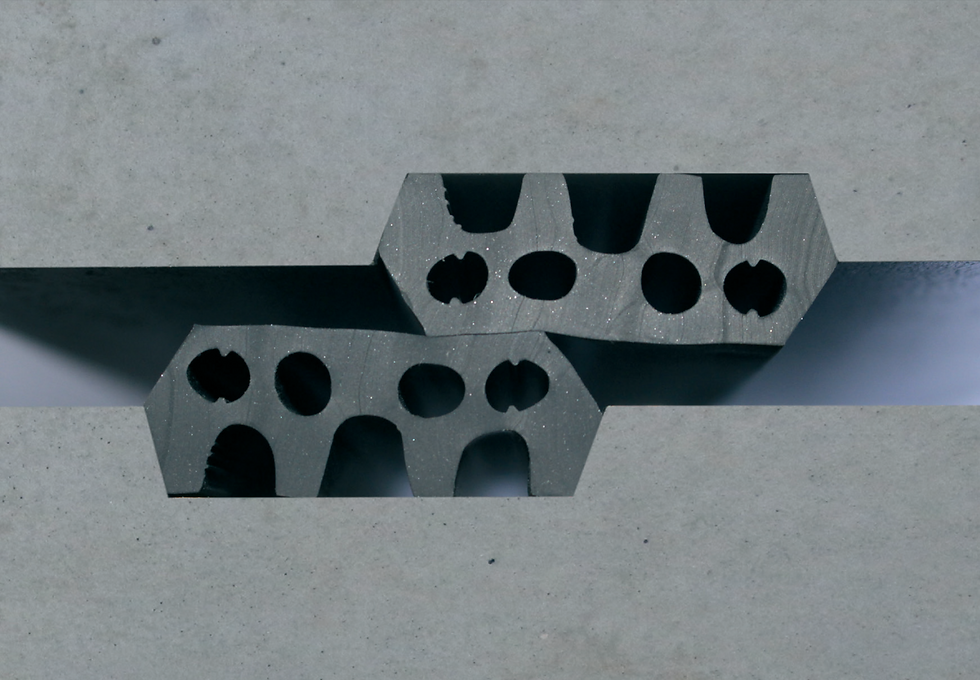Engineering Reversed (1)
- Si Shen

- Nov 10, 2018
- 4 min read
Updated: Nov 11, 2018

It is not until I have had many years of practical experience, did I start to realise why some engineering concepts taught in classes are taught. It was not until I have started designing reinforced concrete, did I start to realise why I was taught the stress-strain and yield curve of steel. It was not until I have started geotechnical modelling, did I start to understand what Mohr-Coulomb circles really meant; before that I was able to use the circle to do all sorts of calculations and pass the exams, but I never knew what this theory was created for in the first place.
The biggest problem in the way that engineering knowledge is taught in classes, in my opinion, is that it is taught without telling you why. In other words, they teach you the theories and solutions without telling you what the problems are. A person given knowledge without knowing why is no different from a farmer given a fighter jet on his field – the best he can do with it is to store grains inside.
The ‘Engineering Reversed’ series of blogs will strip engineering down to its naked form, back to the very basics, by reverse-engineering the theories. It will take a completely opposite, but actually more logical, line of thoughts. It will tell you what practical problems exist first, and then explain why some theories are created. It will use plain English to the best extent possible, be a little less serious, and any technical gobbledygook will be explained with help of real-life analogies.
Re-inventing concrete

Imagine that you are in a virtual reality simulation. You are the first human ever created. With a bolt of lighting you arrive at a place called Earth, with nothing but your own body. Earth is a nice place but it occasionally has rains, wind, snow, which makes you a bit less comfortable. You then decide to start a grand project to build a new invention called a ‘house’. You look around and spot some loose rocks lying around your feet. You think, hmmm, they look pretty solid. So you decide to use these to build your ‘house’. Soon enough, you realise that these rocks do not pile up well because they don’t stick to each other. They are strong as individuals but can not stand up as a group to form a wall. You start to wonder what can make them stick, and with a light bulb over your head you realise that the mud you can easily get near the marsh feels quite sticky. You try to mix the mud with the stones and find them work quite well when combined. You have invented something called ‘concrete’ (or an early prototype of it) - a mix of sticky mud and hard rocks. The combination works really well as it is both as strong as a rock, and as sticky as mud. This new invention has allowed you to build your wall straight up.
Now that the rainy days have passed, the sun starts to shine. You feel warm and relaxed under the sun, but you also notice the mud on the wall starts to dry. You wonder what is going to happen when it dries out. You don’t know so you just wait to find out. Over time you start to see cracks on the surface and the cracks grow longer and wider, until one day, all of a sudden, everything on your wall comes rushing down to the ground, trembling the earth – crash it goes. Luckily you are not hurt, but you believe if it was not because of pure luck, you could have been seriously wounded if not dead (this is what others call a ‘near miss’). You learn through this horrible experience that your prototype ‘concrete’ is unsafe, as it gave you little warning before it collapsed. Unlike when you try to break straws or twigs, where they would get much longer or seriously bend before they finally break, the ‘concrete’ wall seemed almost intact before it suddenly collapsed. You decide to name things that behave like straws or twigs ‘ductile’ things, whereas things that behave like concrete ‘brittle’ things.
Now you have learned that on earth, ‘ductile’ things are soft and bendy, but are usually not as strong as ‘brittle’ things, whereas ‘brittle’ things like concrete are strong and tough, but they break without a warning.
You start to wonder if there is a way to use the strength from both to your advantage. You are smart so it does not take you long before you start adding twigs and straws into the concrete. ‘Concrete Ver2.0’ has been created and you decide to give it a strong name ‘reinforced concrete’. Also, you find it is easy to put the whole twig or the branch directly inside the concrete and you call this ‘bar reinforced concrete’; you mix up the straws with the mud and rock altogether to create ‘fibre reinforced concrete’. Twigs and straws are both very good at preventing the concrete from cracking and breaking off; when a piece tries to break off, the twigs and straws drag it back and hold it in place. Twigs are stronger than straws, but straws are better at closing up cracks. With the addition of twigs and straws, your wall is better than ever before – not only it is stronger, but also it can bounce back to where it was after getting blown by a strong gust of wind.
You are now very happy with your new invention. Just while you are busy with your work, more people have joined the simulation. Seeing what you have done, they have all come to you for help...
To be continued...




Comments